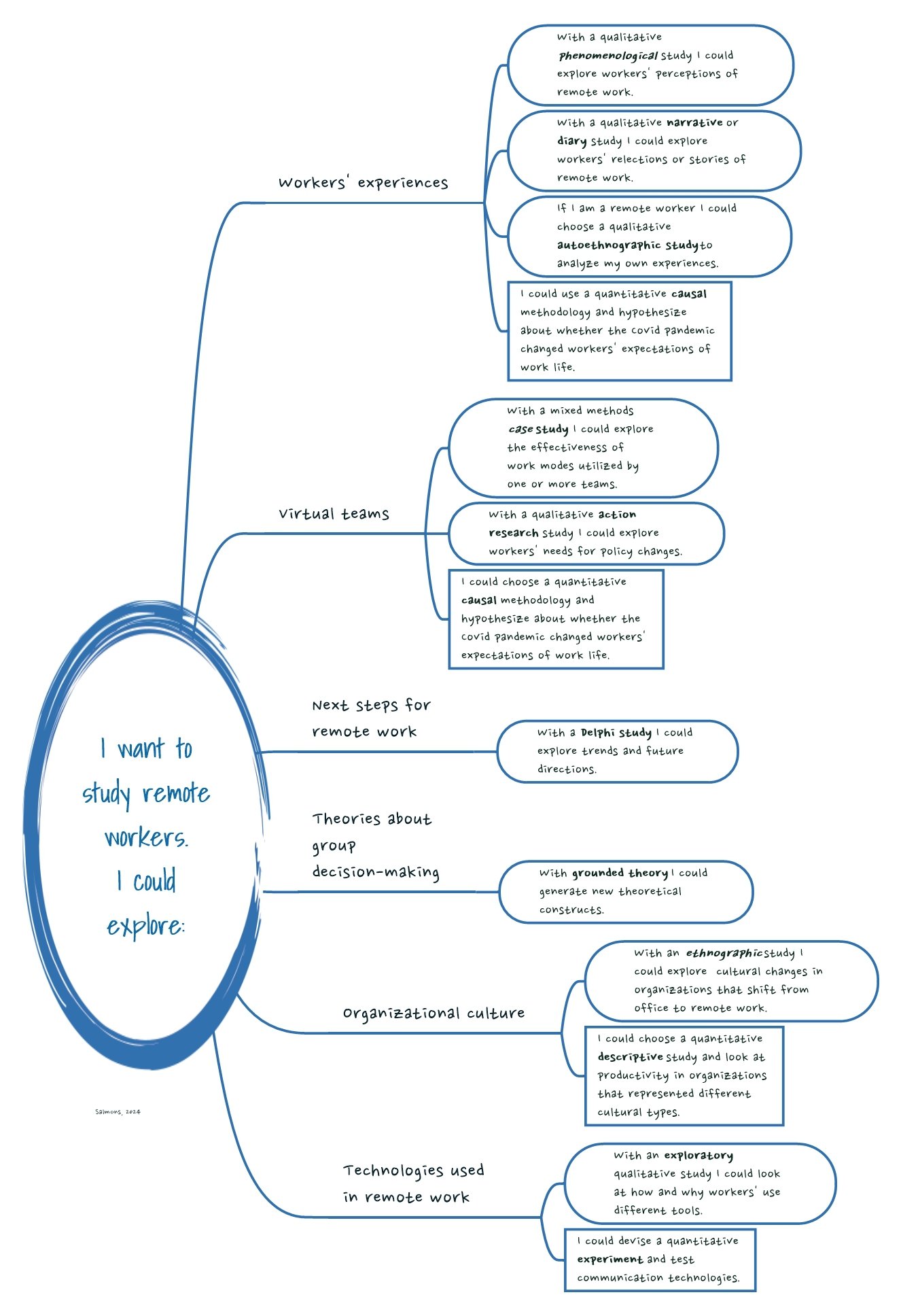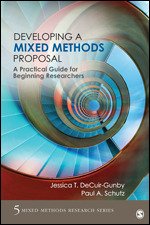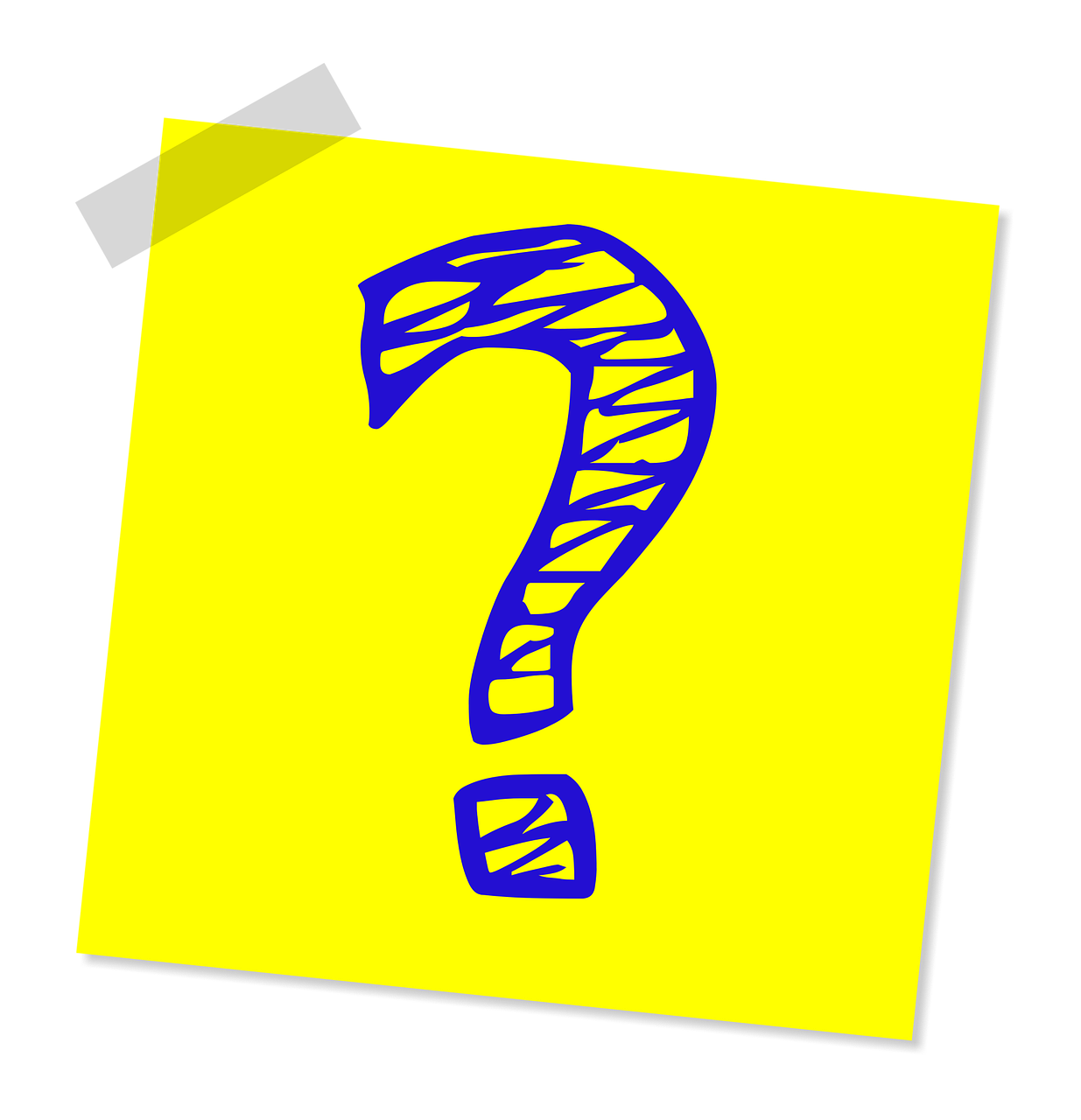Topics, problems, and methodologies
By Janet Salmons, PhD Manager, Sage Research Methods Community
Like what you read? Looking for something in particular?
Please complete this short survey to
help us learn how we can better meet your needs.
Join us for more free webinars!
Find information and register here.
Many questions were posed by attendees to the January 31, 2024 webinar, “How to Connect the Study’s Methodology with Publication Options.” In this post you will find responses to your questions about methodologies and research design generally. Naturally these brief answers provide a simple explanations; see suggested books listed below to dig more deeply.
Questions About Methodology
Q. Are there differences between research design and method?
By “research design” in this context I assume you are referring to the research methodology.
Methodology refers to the philosophies and systems of thinking that justify the methods used to conduct the research. The methodology builds on epistemological and philosophical foundations, and offers a framework for the research design. Methodologies emerge from academic disciplines in the social and physical sciences. What we refer to here as methodologies may also be called research paradigms, types, or genres.
Method refers to the systematic and practical steps used to conduct the study. You will need methods for collecting data, and methods for analyzing and interpreting data.
As you can see, research terms are not used in a uniform way, which makes it difficult when you are trying to learn! Sometimes the terms methodology and method are used interchangeably. Whatever terms you use, it is useful to differentiate the why, or methodology, and the how, or the methods used to conduct the inquiry. The research design is the master plan, the blueprint for the study. It describes all the parts of the process and why they fit together, and explains how you will conduct the study and analyze the data.
Q. Must a research methodology cover all the process in the research onion framework as per Saunders et al. (2012)?
The Research Onion (Saunders & Lewis, 2009)
First, the questioner refers to Saunders et al. (2012). This short, open access piece by Saunders and Tosey explains the layers of the onion diagram. Another resource by Bianchi (2021) explains the model and discusses relationship between research philosophy and research practice. Interestingly, this figure does not include the methods used in data collection or in analysis.
No one study would include the entire onion! That said, researchers need to reflect on and be prepared to explain how they address each layer.
As mentioned above, it is hard to learn terminology when terms are not used in a uniform manner! What I’ve termed methods Saunders et al. call techniques, and so on. That means it is important for you to define terms in the context of your own work, and use them consistently so your reader will not be confused.
You can practice by using the onion to think about the components of research by categorizing research articles you read. How do researchers frame their studies, and how do they convey relationships between their philosophical positions, and methodological choices? When you find good explanations, save those articles to refer to when you are writing your own proposal or report.
Q. Can you explain the flow about choosing the type of methodology?
The same topic could generate many potential qualitative or quantitative studies!
The word flow makes sense here, because research design is not a linear process and sometimes we have to “go with the flow” when we unforeseen obstacles emerge! That said, it is important to really think through what we specifically want to understand about the topic(s) that interest us.
In this mind map you can see that the same general topic could be the basis for a wide range of studies!
You can also see that the same topic could be studied from the perspectives of individuals, teams, organizations, or at a societal level. In other words, changing the units of analysis changes the direction of the research design.
Each of these choices will have implications for the next stages of design: articulating and substantiating the research problem, questions, and/or hypotheses, deciding what data will be needed to answer my questions, and choosing methods that will allow me to collect or generate data.
Q. I want to know more about novelty in research. Does it concerns with the methodology or the findings/result?
All of the above! You can frame the novel contribution of the study in the methodology used, the unit of analysis, population, setting, and/or the findings. Each part of the study offers material you can draw on for articles, book chapters, or professional writings.
Q. Do you have specific article or book reference discussing/explaining 'experimental research methodology'?
See these posts for explanations and collections of open-access articles: Quantitative Research with Nonexperimental Designs and Experiments and Quantitative Research. Naturally, Sage Publishing has to recommend about all aspects of research design. Use the code COMMUNITY3 for a 20% discount on the book, valid worldwide until March 31, 2024.




















The process for researching literature on research methods is somewhat different from the process used for researching literature about the topic, problem, or questions. What should we keep in mind when selecting methods literature?